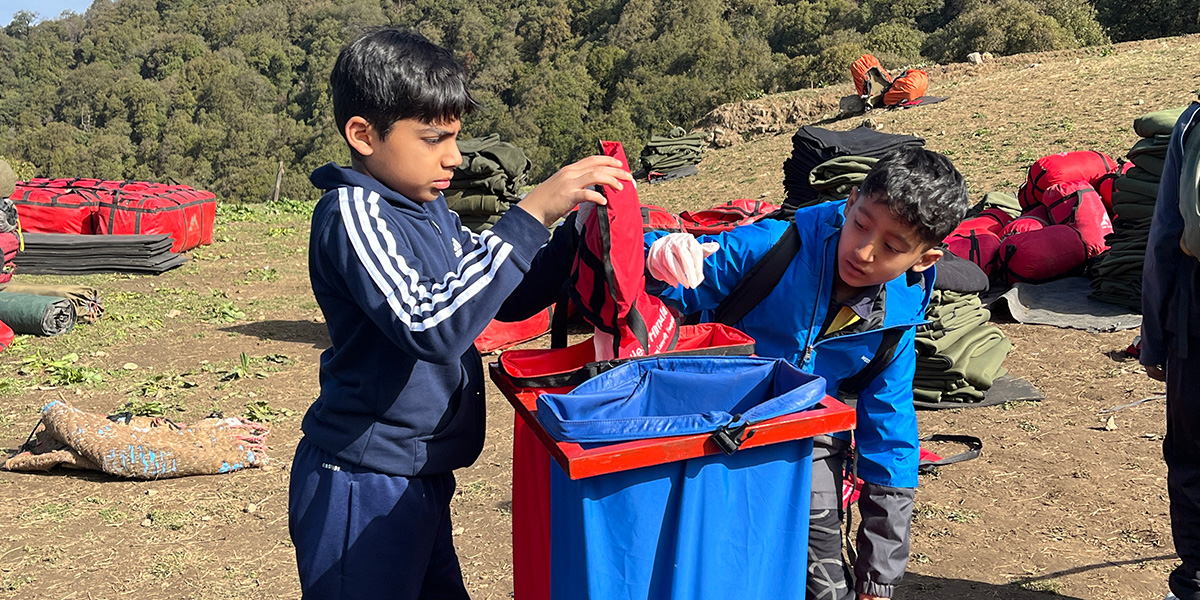Hiking is a fantastic way to connect with nature, but it can also generate waste that harms the environment. Plastic wrappers, disposable bottles, and food scraps often end up polluting trails. A zero-waste hiking adventure minimizes environmental impact by reducing, reusing, and recycling everything you bring. Here’s how to plan an eco-friendly trek that leaves no trace.
1. Choose the Right Gear (Sustainable & Reusable)
The first step in zero-waste hiking is selecting durable, eco-conscious gear:
- Backpack: Use one you already own or invest in a high-quality, long-lasting model made from recycled materials.
- Water Bottle: Opt for a stainless steel or glass bottle instead of disposable plastic.
- Food Containers: Pack meals in silicone bags, beeswax wraps, or stainless steel containers.
- Utensils: Bring a bamboo or reusable metal spork instead of single-use plastic cutlery.
- Clothing: Wear sustainable, quick-dry fabrics and avoid fast-fashion hiking gear.
2. Pack Zero-Waste Snacks & Meals
Food packaging is a major source of waste on trails. Here’s how to pack sustainably:
- Homemade Meals: Prepare wraps, energy bars, or trail mix in reusable containers.
- Bulk-Bin Snacks: Buy nuts, dried fruit, and granola in bulk to avoid plastic packaging.
- Fresh Fruits & Veggies: Apples, bananas, and carrots are great zero-waste options.
- Reusable Coffee/Tea Setup: Bring a thermos instead of single-use coffee pods or tea bags.
3. Waste Management: Leave No Trace
Even on a zero-waste hike, some waste may be unavoidable. Here’s how to handle it responsibly:
- Carry a Small Trash Bag: For any unexpected waste (like fruit peels in non-native areas).
- Compost Organic Waste: If allowed, bury fruit peels or nut shells in a deep hole (check park rules).
- Pack Out Everything Else: Never leave tissues, wrappers, or biodegradable waste behind.
4. Eco-Friendly Hygiene & Toiletries
Staying clean without plastic waste is possible with these swaps:
- Solid Toiletries: Use shampoo bars, toothpaste tablets, and biodegradable soap.
- Reusable Menstrual Products: Consider a menstrual cup or reusable pads instead of disposable ones.
- Bamboo Toothbrush: A sustainable alternative to plastic brushes.
- Microfiber Towel: Quick-dry and reusable.
5. Transportation & Trail Etiquette
- Carpool or Use Public Transport: Reduce carbon emissions by sharing rides.
- Stay on Marked Trails: Avoid damaging fragile ecosystems.
- Respect Wildlife: Observe from a distance and never feed animals.
Conclusion
A zero-waste hiking adventure is not only possible but also rewarding. By choosing reusable gear, packing waste-free meals, and following Leave No Trace principles, you can enjoy nature responsibly. Every small step toward sustainability helps preserve the wilderness for future hikers. So, gear up, pack smart, and hit the trail—without leaving a trace!
Discover more through these resources :
https://wordtaps.com/
https://heatheninc.com/
https://vstorekids.com/
https://mundoadministrativo.net/
https://aguidetravel.com/
https://onlinebuymarijuana.com/
https://tnanews.net/
https://janewashere.co.uk/
https://hotelsinvalencia.org/
https://topholidays.net/
https://zbusoft.com/
https://triltechnology.net/
https://homelessinformation.com/
https://cadhomeplan.com/
https://marcospitbullhome.com/
https://polynews.org/
https://healthylivingindia.org/
https://thenewstime.net/
https://promopoker.net/
https://refinance-student-loans.org/
https://cityp.org/
https://oldpathshomesteading.com/
https://newsetmoto.com/
https://aboutfinancetoday.com/
https://homesandbenefits.com/
https://geotheatre.org/
https://firstpresbyterianpreparatoryschool.org/
https://homesbyelva.com/
https://askdrhealth.com/
https://thefashionstyle.org/
